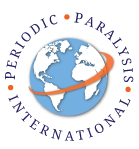*Emergency Treatment of Andersen-Tawil Syndrome
First Actions: Monitor closely, weakness can rapidly progress to paralysis, torsades de pointes, cardiac arrest and respiratory failure. Paralyzed patients may appear to be unconscious, but are awake and aware. Do not assume they cannot feel pain or hear conversations. Andersen-Tawil syndrome (ATS) is characterized by the triad of episodic flaccid muscle weakness, distinctive dysmorphic…

